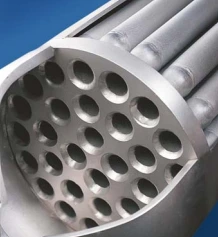
According to Digital Journal’s global wine forecast into 2024, wine is on the rise in the world alcoholic beverage market, driven by the demand for low-alcohol alternatives. Consumer response to the negative impact of alcohol on health and crime, among other factors, is predicted to boost new products and maintain industry growth through the next five years. Different varieties of wine are also in demand, such as sparkling wine (often referred to as “Champagne”), and fortified wines produced by adding a distilled spirit.
These projections for wine producers are undoubtedly positive, but should be sipped not gulped. A 2018 Forbes report states that the wine industry’s 20-year upward trajectory will level off due to “new consumers with different values” who are more frugal and indulge less frequently with limited discretionary income. And as grape prices climb, winery owners are finding it difficult to pass along production cost increases to a more resourceful demographic that spends its limited resources across a multitude of online options.

Winebusiness.com
So where do wine producers make up the difference without sacrificing quality? One area of adjustment that could maintain quality while reducing costs is by increasing the durability of the cross flow filtration technology utilized during the challenging clarification process.
Cross flow filtration (CFF), also known as tangential-flow (TFF), is a separation method in which a particle-containing fluid passes tangentially along the surface of a membrane filter. By creating a pressure differential across the membrane, components smaller than the pores of the membrane pass through the filter while larger components are retained and move along the surface of the membrane. As a result, solids are swept away, thus preventing the build-up of material on the filter surface, reducing fouling of the filter. This in turn allows for the filtration of high solids fluids, which would otherwise plug typical dead-end filtration technologies.
Most crossflow filter technologies utilize polymeric membranes. These membranes may be composed of polypropylene, polysulfone, PVDF or other typical membrane materials. As such, the operating environment of the CFF technology may be limited by the temperature tolerance or material compatibility. Aggressive chemicals or elevated temperatures such as those used in the production of wine will damage or destroy the membrane and the structural components in the cassette or module, rendering it inoperative. Therefore, a more robust technology is required such as the SCEPTER® crossflow microfiltration and ultrafiltration products offered by Graver Technologies.
SCEPTER membrane tubes are welded together into all-stainless steel module assemblies, which are generally incorporated into a custom engineered ultrafiltration system. To enhance chemical and thermal compatibility and to eliminate potential failure points, the modules are of all-welded construction with no gaskets, O-rings or polymeric components. The all-welded, no-gasket module construction enhances cleanability, durability and compatibility.
SCEPTER technology has been used successfully for over thirty years across a wide spectrum of industrial and commercial applications. These systems are often specified as replacements where other technologies have failed or where no other membrane technology can be used, making it a clear cost-effective option for wineries, breweries and wherever a durable and robust structure is required for operating conditions that would normally damage or destroy polymeric or ceramic membranes.
The economic challenges to the wine industry are fairly clear, and while marketing wines may undergo a paradigmatic shift to address them, modifications in wine production may also be critical to finding solutions. Graver’s SCEPTER technology is broadly adaptable to a wide variety of system configurations, from basic batch processing to more complex multi-stage continuous designs. Because SCEPTER systems are based on modular units, it’s easy to increase capacity as need arises, just by adding additional modules or stages. This allows for very high-area systems with the least number of individual modules providing the smallest footprint, void volume, complexity, capital and operating costs.
Need help?
You can find the right application or product using our Tool, or through our Chat Bot.
Keep In Touch
Keep up to date with our latest news and announcements. Unsubscribe anytime.




.svg)
.svg)



